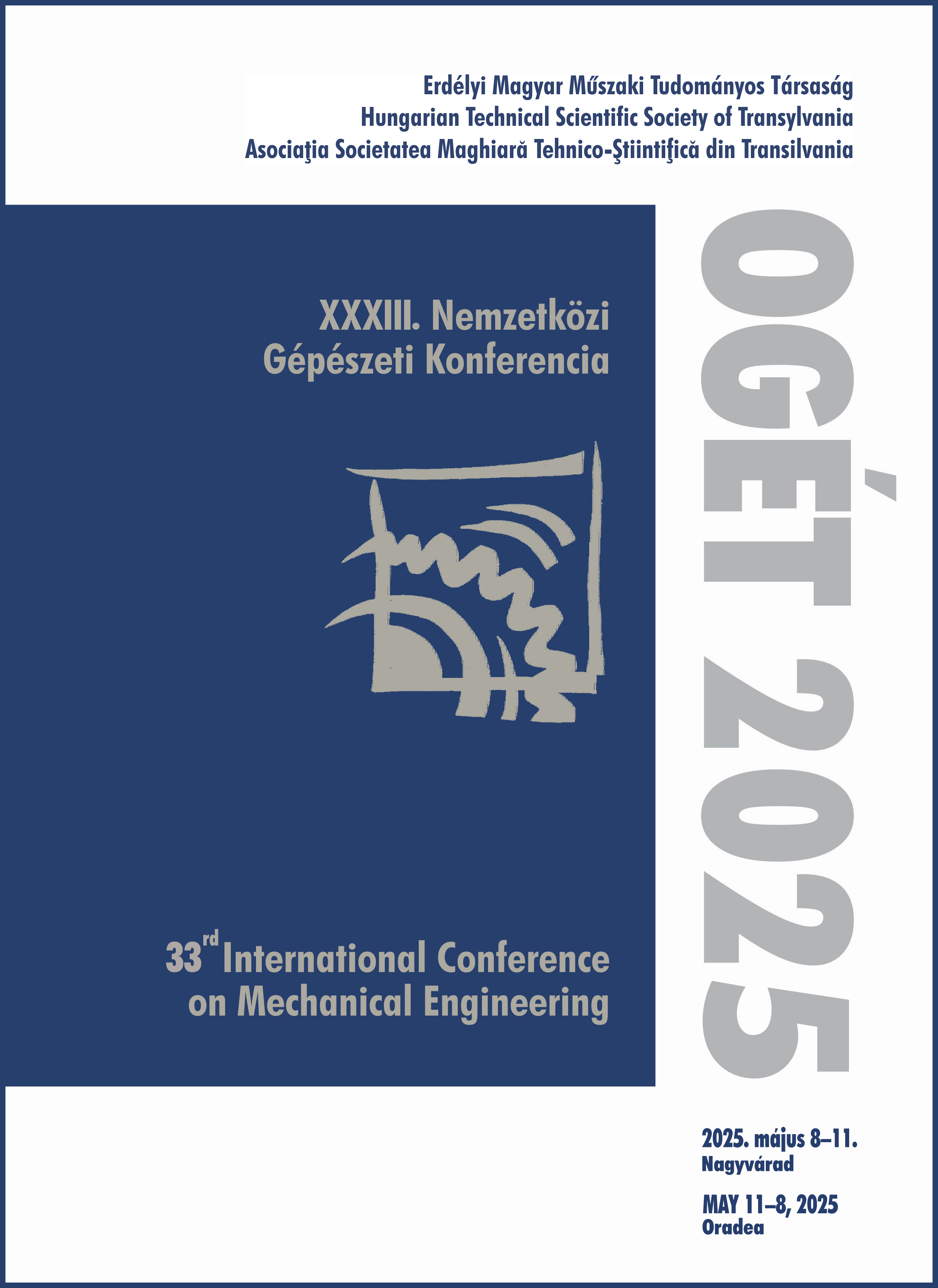Kombinált furatforgácsoló technológia fejlesztése a forgácsolásindukált rétegközi sorja minimalizálására CFRP/Al szerkezetekben
Development of a combined hole-making technology to minimize cutting-induced interlayer burr in CFRP/Al structures
Keywords:
Sandwich structure, burr, technology, /, Szendvicsszerkezet, sorja, technológiaAbstract
Metal/fibre-reinforced polymer composite sandwich structures are increasingly utilised in various applications, with drilling being a commonly used cutting technology. During drilling of such sandwich structures, burr formation frequently occurs at both the entry and exit sides, as well as in the interlayer region (between the two plates). Due to the difficulties associated with burr removal, minimising interlayer burr formation is essential. The aim of this research is to develop a technology that reduces interlayer burr formation under the same machining parameters. To achieve this, a helical milling with spiral hole expansion was developed to reduce the risk of interlayer burr formation. The drilling experiments were designed using the Central Composite Inscribed (CCI) method, where two quantitative factors (cutting speed and feed per tooth) were varied at five levels each. In contrast, one qualitative factor (machining technology) was tested at three levels. The holes were drilled in UD-CFRP/Al (unidirectional carbon fibre-reinforced polymer composite/aluminium) sandwich plates. Interlayer burr height was measured on both sheets using a Keyence VR-5000 profilometer. In the UD-CFRP layer, the developed technology resulted in a significantly lower maximum burr height within a 95% confidence interval. Based on these findings, further investigation of the technology is necessary to explore its potential for industrial applications.
Kivonat
Napjainkban egyre több helyen használják a fém/szálerősített polimer kompozit szerkezeteket, amelyeken a fúrás a leggyakrabban alkalmazott forgácsolási technológia. Az ilyen összetett szerkezetek fúrása során gyakran keletkezik sorja a be- és kilépő oldalakon, valamint rétegközben (két lemez között) egyaránt. Az eltávolítási nehézségek következtében nélkülözhetetlen a rétegközi sorja minimalizálása. A kutatás célja egy olyan technológia fejlesztése, amivel csökkenthető a rétegközben keletkező sorja ugyanazon technológiai paraméterek mellet. A kutatás során helikális marási technológiát rétegközi spirálbővítéssel adaptáltuk a rétegközi sorja kialakulási kockázatának csökkentése érdekében. A fúrási kísérletek tervezését a Central Composite Inscribed kísérlettervezési módszerrel végeztük, ahol két mennyiségi faktort (forgácsolási sebesség és fogankénti előtolás) variáltunk öt-öt szinten, míg egy minőségi faktort (technológia) variáltunk három szinten. A furatokat UD-CFRP/Al (Egyirányú szénszállal erősített polimer kompozit/Alumínium) lemezeken készítettük. A rétegközi sorja mérését egy Keyence VR-5000 típusú profilométerrel végeztük mindkét lemezen. Az UD-CFRP lemeznél az általunk fejlesztett technológia hatására szignifikánsan kisebbnek adódott 95 %-os szignifikancia intervallum mellett a maximális sorjamagasság. Az eredmények alapján szükséges a technológia további vizsgálata, a valós ipari alkalmazások felkutatásának érdekében.
References
N. Eswara and P. R. J. H. Wanhill, “Indian Institute of Metals Series Aerospace Materials and Material Technologies,” 2017.
E. Doluk, “Comparison of hole quality after drilling and helical milling of the Al/CFRP stacks,” Technologia i Automatyzacja Montażu, vol. 122, no. 4, pp. 3–12, 2023, doi: 10.7862/tiam.2023.4.1.
X. Zhang, M. Li, and D. Huang, “Surface quality and burr characterization during drilling CFRP/Al stacks with acoustic emission monitoring,” J Manuf Process, vol. 98, pp. 138–148, Jul. 2023, doi: 10.1016/j.jmapro.2023.04.076.
G. Franz, P. Vantomme, and M. H. Hassan, “A Review on Drilling of Multilayer Fiber-Reinforced Polymer Composites and Aluminum Stacks: Optimization of Strategies for Improving the Drilling Performance of Aerospace Assemblies,” Sep. 01, 2022, MDPI. doi: 10.3390/fib10090078.
J. M. Jebaratnam and M. H. Hassan, “Process enhancement and performance evaluation of single-shot drilling of CFRP/aluminum stacks: a review,” Dec. 01, 2024, Springer Science and Business Media Deutschland GmbH. doi: 10.1007/s00170-024-14610-8.
N. Tamil Alagan et al., “Investigation of the quality of Al-CFRP stacks when drilled using innovative approaches,” CIRP J Manuf Sci Technol, vol. 43, pp. 260–272, Jul. 2023, doi: 10.1016/j.cirpj.2023.04.011.
R. D. F. S. Costa, J. N. S. Duro, V. F. C. Sousa, T. E. F. Silva, D. A. Figueiredo, and A. M. P. Jesus, “Drilling of CFRP/Al multi-material stacks using WC-Co CVD diamond coated tools,” in Procedia Structural Integrity, Elsevier B.V., 2024, pp. 376–385. doi: 10.1016/j.prostr.2024.01.044.
R. B. D. Pereira, L. C. Brandão, A. P. de Paiva, J. R. Ferreira, and J. P. Davim, “A review of helical milling process,” Sep. 01, 2017, Elsevier Ltd. doi: 10.1016/j.ijmachtools.2017.05.002.


